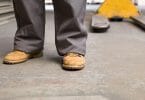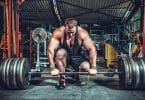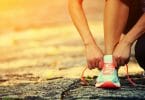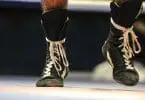Your ultimate guide to the best barefoot running shoes and why you need to try them

Barefoot running shoes are changing up running for everyone. We've put to together the ultimate guide to get you ready for the minimalist running experience.
Do you want to find out more about how to pick the right barefoot running shoes? Trying to figure out the difference between barefoot running shoes and minimalist running shoes?
Before the advent of shoes, humans roamed across the world barefoot. The ancient pre-historic man didn’t need heavy, padded, clunky shoes to hunt wild animals or fight predators.
There was no extra weight to carry around, and they didn’t have demands that the modern man does. Now, thousands of years later, we’re trying to go back again!
There’s a good reason we want to go ‘back’. The feeling is freeing, and your feet can really breathe. You may feel like you’re running on clouds.
Why Are Barefoot Running Shoes Gaining Popularity?
Some people want the feeling of freedom back. Barefoot running shoes can fill that void. This style is often referred as natural running, as your foot retains the same shape. It even helps you stay grounded and stay connected with the natural environment.
The popularity of such a movement made companies invent shoes which mimic barefoot running.
Barefoot running shoes are the talk of the town these days in the running world.
You could run entirely barefoot if you want, but that comes along with a number of risks as well. If it’s too cold, or too hot, then your feet will be in trouble. Also friendly terrain to run on is limited.
Roads are hot and dangerous and if you go on a trail then there are bound to be countless rocks.
You would want to get a shoe-free running experience while still protecting the sole of your feet, and this is where the concept of these shoes kick in. They provide the protection you need.
The term 'Barefoot running shoes' may be oxymoronic, but there is actual science behind it as well.
Scientific studies from reputed universities such as Harvard has provided evidence that running barefoot reduces your impact on the ground.
They provide a more efficient manner of running and help avoid injuries which can occur by landing on your heels.
When you're running in traditional running shoes, you land heel first. This underutilizes the ligaments of your foot, and weakens them, and can result in an injury.
These shoes usually go by two names: barefoot running shoes (also known as zero drop) and minimalist running shoes.
Barefoot Running Shoes
Shoes which have the least elevation from the ground. Most of the time these shoes have no or very little cushioning available.
The height of the shoe remains constant from the toe to the forefoot.
Minimalist Running Shoes
These shoes are the middle ground between barefoot running shoes and normal running shoes.
They usually have a height difference between the toes and the heels of around 5 mm, and there is some cushioning available as well.
What to look for when purchasing barefoot running shoes?
In the previous few years, the market for such shoes has eclipsed to a whole new level when it comes to providing protection and top-class technology, as well as keeping you injury-free and all at the same time being extremely lightweight.
There are traditional older models available which provide extra padding and an additional mass. The best barefoot shoes will be the ones which you forget you’re wearing.
With time and experience, runners will easily identify how to land properly on their forefoot.
The heel running is usually embedded into the mind of most runners because of the extra padding that is provided by most of the normal running shoes, and soon after changing, your strides should differ as well.
Many people may think that this is the wrong way to run but they're wrong.
Even while running on hard surfaces such as asphalt, running this way can help you avoid discomfort and pain.
When in the market for these shoes, there are a few things that a runner should be looking for.
First off, whichever shoe you choose, should mimic being barefoot as close as it possibly can. It should only feel like an extra layer of skin on your feet.
Below mentioned are a few aspects you should expect from your barefoot shoes.
Low heel-to-the-toe drop
The elevation of these shoes should really be as low as they possibly can, and the difference in height between the toe and the forefoot area being zero is common.
This enables the foot position inside the shoe to mimic an actual foot.
Flexibility
The shoe should be able to bend and flex properly just like your foot can.
There are many shoes which have hard soles, and you should make sure to avoid such shoes as they don’t provide proper landing for your strides.
Thickness
The thickness of these shoes should be minimal, and the height of the shoe should be uniform throughout.
When the shoe is thin, it feels like it is part of your human anatomy.
Pros and Cons
Pros
- Runners who advocate for these shoes claim that it helps avoid the risk of repetitive stress injuries caused by normal running shoes.
- Low to no impact on joints, which can help preserve your joints in the long run.
- Your sense of balance and grip will generally improve. Using such shoes, you activate the small muscles in your leg and legs which don’t get activated when you’re using normal running shoes. This, in turn, offers the runner better balance.
- Provides feet with protection against harsh environments.
- Strengthens interior anatomy of the foot such as muscles, tendons and ligaments so that the arch remains stable. When the interior of your foot becomes stronger, it helps prevent injuries.
- Extremely lightweight. Most barefoot shoes weigh less than 9 ounces.
- By running with minimal footwear, one can improve their posture naturally. Normal strides look normal and it can reverse the damage caused by typical running shoes over the years as well. This may help with knee and hip discomfort.
Cons
- Takes time getting used to. The first time you try these shoes on, it may feel awkward.
- Hard to wear in extreme weather conditions (i.e. too cold or too hot).
- Some people may develop blisters for the first couple of weeks.
- Not for everyone. These shoes will not suit everyone, especially people with a foot condition such as flat feet.

Frequently Asked Questions
If you're new to the world of barefoot running shoes and are in the market for a new pair, then you’ll certainly have some questions of your own. Here are some frequently asked questions:
How much time will it take to get accustomed to barefoot running shoes?
There is no one size fits all answer for this question.
Every person is different, and for sure it can take some time to get used to the feeling of such shoes, but generally you’ll get used to it within two weeks or so.
Should use barefoot running shoes if I have flat feet?
Flat feet require additional support, so the answer is no.
Wearing zero drop shoes will give you issues later down the line as there isn’t enough support, and may result in an injury.
Which model or brand should I be getting?
There are a lot of choices when it comes to picking the right shoe. Go to a shoe store and check what options they have.
Wrapping up
Barefoot running shoes may be a means to the end for the average runner. If the end result they expect is a proper form and the reduced risk of injury, barefoot shoes may be the answer.
These shoes are designed without extra cushioning to make you develop a proper running form so your feet and legs can work the way nature intended.
If you want to find out more about running shoes and how to enhance your running experience, don't hesitate to take a look at our blog.
We break down the anatomy of the shoe and we talk about the best running shoes on the market for men and women.
If you have any questions about how to pick the right shoes, don't hesitate to contact us.







Leave a Comment